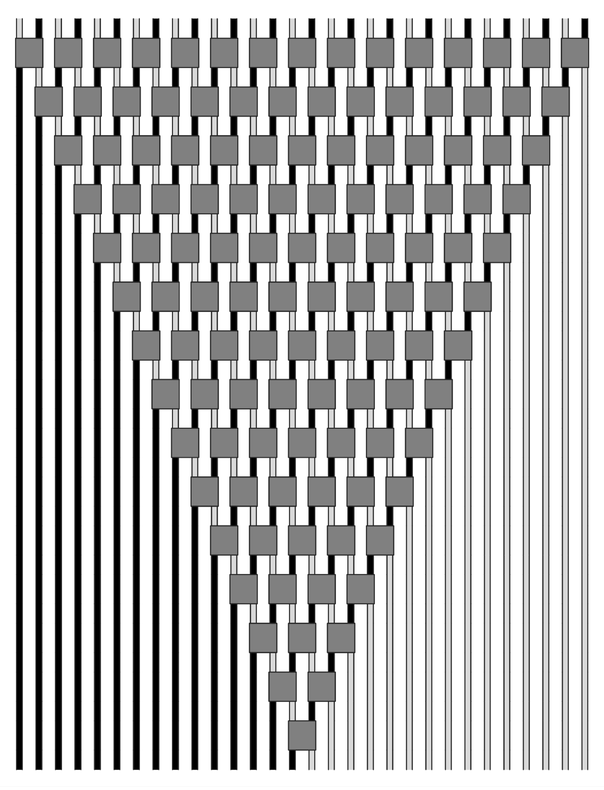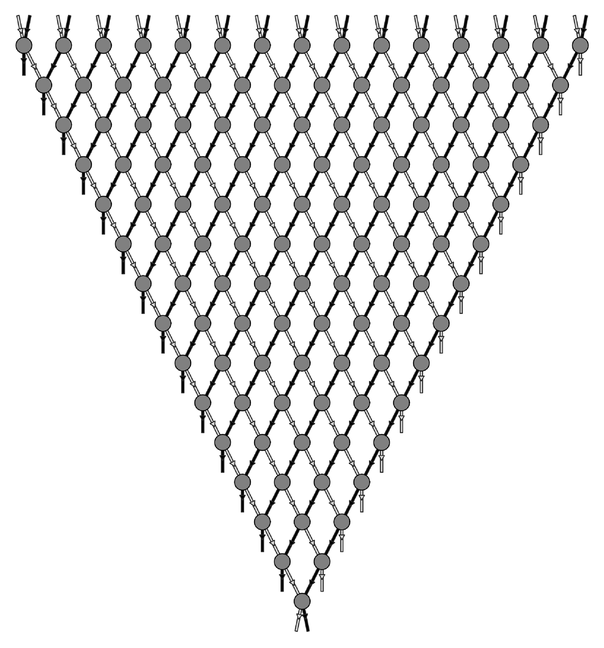One of the defining features of space as we normally experience it is a certain locality that leads most things that happen at some particular position to be able at first to affect only things very near them.
Such locality is built into the basic structure of systems like cellular automata. For in such systems the underlying rules allow the color of a particular cell to affect only its immediate neighbors at each step. And this has the consequence that effects in such systems can spread only at a limited rate, as manifest for example in a maximum slope for the edges of patterns like those in the second set of pictures below.
In physics there also seems to be a maximum speed at which the effects of any event can spread: the speed of light, equal to about 300
 |  |  |
 |
A very simple substitution system whose causal network has slices that can be thought of as corresponding to a highly regular idealization of one-dimensional ordinary space. The rule effectively just sorts elements so that black ones come first, and yields the same causal network regardless of what updating scheme is used.

Examples of patterns produced by cellular automata, illustrating the fact discussed in Chapter 6 that the edge of each pattern has a maximum slope equal to one cell per step, corresponding to an absolute upper limit on the rate of information transmission—similar to the speed of light in physics.